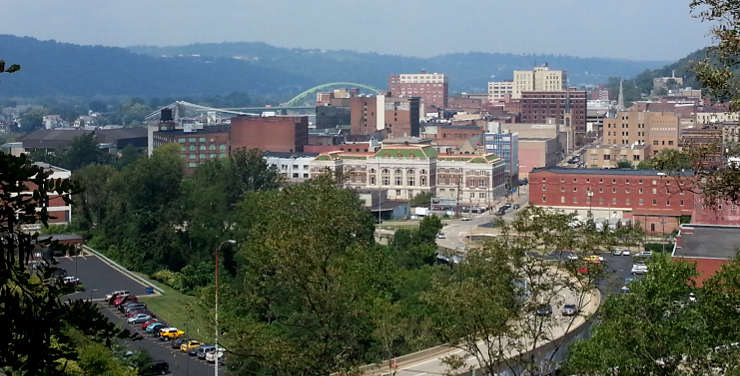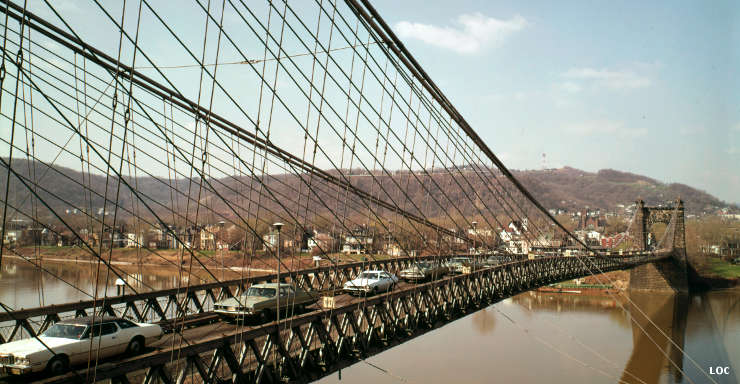Wheeling National Heritage Area

A view of downtown Wheeling, West Virginia
Wheeling National Heritage Area is an alliance between the National Park Service and various local and state agencies and NGO's in the Wheeling area to preserve and promote the history of Wheeling and its industrial heritage. Because of its location, Wheeling became one of America's first transportation hubs. The National Road arrived in 1818 (connecting the Ohio and Potomac Rivers) and Wheeling served as the western terminus of that road until the Wheeling Suspension Bridge was constructed in 1849, allowing direct commerce with the western side of the Ohio River. Then the Baltimore & Ohio Railroad arrived in 1853.
During the Civil War the city was a meeting place for those in the western counties of Virginia who wanted to secede from Virginia and form their own free state. So the Restored Government of Virginia called Wheeling home from 1861 to 1863, then moved its address to Alexandria when West Virginia was admitted to the Union as a free state in 1863. The first capital of the free West Virginia was in Wheeling.
Wheeling reached its peak population in 1930, then the Great Depression hit and other changes in later years prevented the city from ever recovering. Today Wheeling is working to leverage its architectural heritage to build its tourism industry.

The famous Wheeling Suspension Bridge
Lower photo courtesy of the Library of Congress